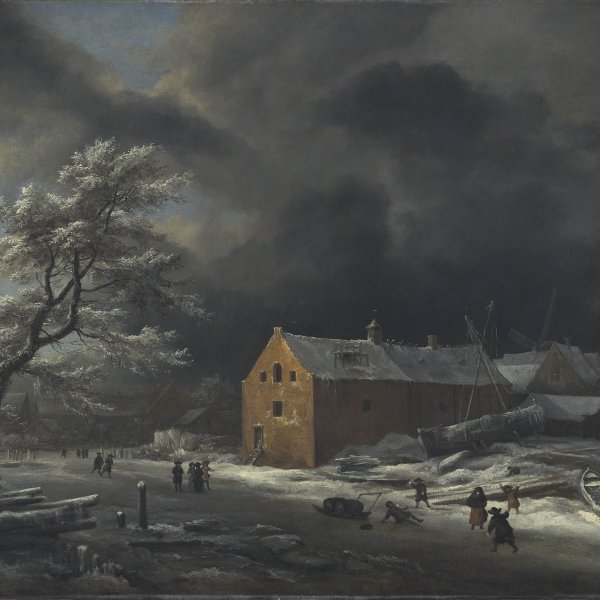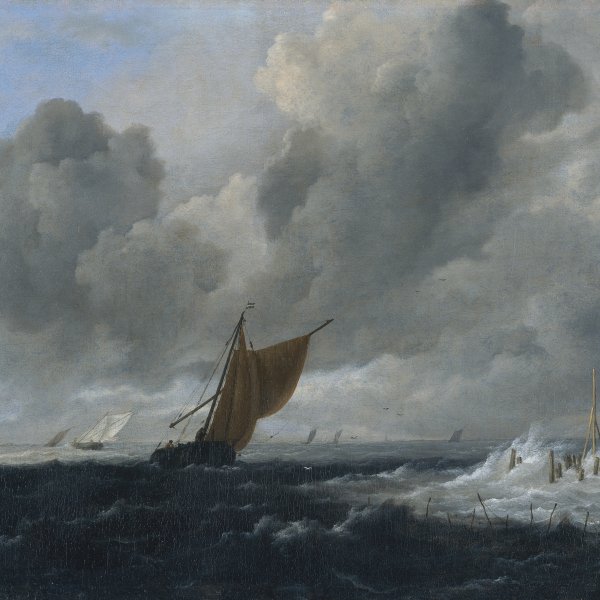View Inland from the Coastal Dunes
ca. 1670
Oil on canvas.
52.7 x 66.7 cm
Museo Nacional Thyssen-Bornemisza, Madrid
Inv. no.
356
(1930.101
)
ROOM 28
Level 2
Permanent Collection
The present oil on canvas was acquired for the Thyssen-Bornemisza collection in 1928 from the Hoogendijk & Co. gallery in Amsterdam, with the title View of Haarlem. Subsequent publications of the Collection in which this new acquisition was included and described included it up to 1958 with the title View of Haarlem from the Dunes of Overveen. In 1969 Ebbinge-Wubben published the painting as View of Haarlem with the Huis ter Kleef, a proposal that was retained in the subsequent editions of the catalogue by Borghero and Watteville. Given the difficulties of definitely identifying this view, Gaskell preferred to use the title that appears in this edition.
The canvas can be related to two others that show the same view with slight differences. The first is in Upton House, Warwickshire, and the second in the Fine Arts Museum, Boston. In the 1940s it was suggested that the Boston view depicted the outskirts of Alkmaar and that the castle, which in the present canvas appears between trees on a hill, was the castle of Egmond. On the basis of a comparison of the three canvases, Gaskell suggested that it was in fact the ruins of the castle of Brededore to the north of Haarlem, which was drawn by Pieter Saenredam, Hendrick Goltzius and Van Ruisdael.
The composition of the present canvas is to be found in other works by Van Ruisdael, with much of the canvas occupied by a sky with large masses of clouds and patches of blue sky between them. The view below is a broad stretch of land with a horizon line, in this case relatively well defined, in which the flat areas of land are combined with paths, clumps of trees and various buildings such as the church in the background. With regard to the attribution, which has always been catalogued as by Van Ruisdael, Gaskell preferred to catalogue it as “attributed to Van Ruisdael”, while Gerson had already expressed some doubts on its attribution in 1964. For Gaskell the construction of the pictorial depth is not particularly well achieved through the receding compositional lines on the left between the lines of the hill, or on the right through the path framed by a line of trees. Slive dated the canvas to around 1670–75 and considered it to be an autograph work.
Mar Borobia
The canvas can be related to two others that show the same view with slight differences. The first is in Upton House, Warwickshire, and the second in the Fine Arts Museum, Boston. In the 1940s it was suggested that the Boston view depicted the outskirts of Alkmaar and that the castle, which in the present canvas appears between trees on a hill, was the castle of Egmond. On the basis of a comparison of the three canvases, Gaskell suggested that it was in fact the ruins of the castle of Brededore to the north of Haarlem, which was drawn by Pieter Saenredam, Hendrick Goltzius and Van Ruisdael.
The composition of the present canvas is to be found in other works by Van Ruisdael, with much of the canvas occupied by a sky with large masses of clouds and patches of blue sky between them. The view below is a broad stretch of land with a horizon line, in this case relatively well defined, in which the flat areas of land are combined with paths, clumps of trees and various buildings such as the church in the background. With regard to the attribution, which has always been catalogued as by Van Ruisdael, Gaskell preferred to catalogue it as “attributed to Van Ruisdael”, while Gerson had already expressed some doubts on its attribution in 1964. For Gaskell the construction of the pictorial depth is not particularly well achieved through the receding compositional lines on the left between the lines of the hill, or on the right through the path framed by a line of trees. Slive dated the canvas to around 1670–75 and considered it to be an autograph work.
Mar Borobia









